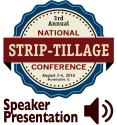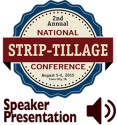Advertise Follow Us
Seeding & Planting
Information and tips about seeding and planting cash crops and cover crops using the strip-till method, as well as equipment innovations and trends.
ARTICLES
[Podcast] What I’ve Learned from 30 Years of Strip-Till
On this edition of the Strip-Till Farmer podcast, brought to you by Yetter Farm Equipment, longtime strip-tiller Alan Madison shares his 8 keys to strip-till success and reveals the top takeaways from decades of on-farm trials in Walnut, Ill.
Read More
[Podcast] Q&A with Strip-Till Yield Champion David Hula
On this edition of the Strip-Till Farmer podcast, brought to you by Yetter Farm Equipment, Charles City, Va., strip-tiller David Hula shares the keys to his strip-till success.
Read More
[Podcast] Corn Roots, Tar Spot Solutions & New Strip-Till Tools at National Farm Machinery Show
On this edition of the Strip-Till Farmer podcast, brought to you by Yetter Farm Equipment, we’re headed inside the 2025 National Farm Machinery Show in Louisville, Ky.
Read More


















